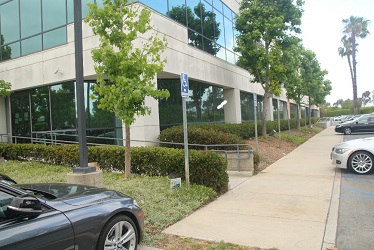The use of cycads in drought tolerant landscapes is not a new concept. In southern California, most of the collectors that I know, by virtue of their interest in growing the unusual, have a unique blend of cycads, palms, and succulents in their gardens. Perhaps without even trying, they have included one, if not several, of the plant families that are known to tolerate infrequent irrigation/drought conditions. Until recent years, the use of drought tolerant plant material had been simply one of the many choices that one could select when deciding upon a landscape solution for residential or commercial applications. However, with recent water shortages and rationing issues faced by many in the western and south western regions of the U.S., there has been a movement away from the use of plant material that requires heavy irrigation, and toward drought tolerant solutions.
This past summer I had the opportunity to design and oversee the transformation of a large commercial property, whose ownership group had chosen to take advantage of a significant monetary incentive, which was provided by their local water district. This monetary award was contingent on the removal of all high water demand landscaping, and replacement with drought tolerant material. The commercial property consisted of approximately 60,000 square feet of office space with a footprint of around 30,000 square feet. Landscape space completely encompassed the structure. Much of its original material, which was installed in the mid ‘80’s, had fairly high irrigation requirements. Water conservation was not a concern at that time.

The original landscape was comprised of grass, ivy, deciduous trees, pines, and a variety of shrubs. After most of the original landscape had been removed, a plan was drawn up, and the task of procuring the specified material was undertaken. The acquisition of plant material involved 13 different grower sources over a period of two and a half months. Installation took place during summer, and the old irrigation was modified and upgraded to accommodate the new plant positioning.
As a broker/grower of palms and cycads, I have a good understanding of the unique drought tolerant advantages of many species of cycads, palms, and succulents. This blend of exotic material with similar low water requirements was arranged in such a way as to take advantage of the seasonal changes of sunlight and juxtaposition to compliment the architectural elements of the building. Additionally the character and size of the individual plants was taken into consideration in an effort to create a pleasing and complimentary visual appeal.
This project has proven to me that a drought tolerant landscape does not need to be void of beautiful, exotic, plant material, nor does it necessarily require sacrificing a tropical look. There is such a substantial variety of material that can be used, even the most discriminating of customers can achieve satisfaction with a drought tolerant landscape.
Grow and prosper,
Keith